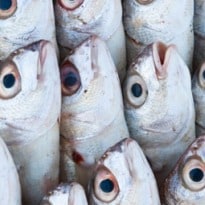Women-led aquafarming projects in Bangladesh have led to a 500% increase in fish production
In Bangladesh, more than 20 million people currently suffer from undernutrition, and nearly a third of the population live in poverty.
This needn't be the case. There are four million ponds throughout rural southern Bangladesh which could be used to cultivate a healthy, high-protein food: fish.
Aquaculture is a branch of farming that involves cultivating fish, crustaceans, molluscs and aquatic plants under controlled conditions. In a recent initiative by the CGIAR research programme on Aquatic Agricultural Systems (AAS), these ponds are being used in women-led aquafarming projects as sources of food and income.
The research programme works with 96 women in eight communities to identify the best varieties of fish and feed for local conditions. The project started by establishing a vision of the homestead farms, then identifying specific problems such as the selection of species that can grow well in shaded ponds.
With support from researchers, the women designed the research plan, lead meetings and conducted research in their ponds, recording results and reported back to the group with their findings and observations. The introduction of new aquaculture practices has been coupled with education and training about the nutritional benefits of eating small fish and vegetables.
There are huge work opportunities for women in aquaculture. With the ponds close to the home, women can easily access these resources, have a say over their use and take on roles like fish feeding, monitoring growth rates, regular harvesting for consumption and demonstrating techniques to others in the community.
In the first year production of fish from ponds increased substantially: on average by 500% from previous years. Likewise, a recent study shows that growth in aquaculture has led to greater fish consumption among the poorest consumers in Bangladesh.
A key learning from this initiative, and others like it, is that involving men and women in the learning process helps to develop understanding at the family level, and can advance progress towards gender equality. Kamola Roy, a wife and mother who participated in the project, commented that her husband treated her with more respect, and the family could now enjoy fresh fish every day, when before they only had the means to buy fish once a week.
Also, shifting ownership of the work to farmers and prioritising their preferences in the programme design was an important feature. This kind of farmer-led innovation has been shown to build capacity to solve the problems smallholder farmers face.
With over 4m small home ponds in Bangladesh, there is great potential to scale this approach and increase fish production. Key to scaling-up the process is the project facilitators' skill in engaging the farmers in the process and increasing their confidence and capacity to continue. This initiative could also include a management package to give more control to local farmers.
Working with an extensive network of donors and partners is essential to create change for the millions who depend on fish in the developing world. As shown in this project, partnerships help to bring technologies and innovations to scale through the sharing of expertise, which will help international NGOs achieve greater development impact.
Kazi Ahmed Kabi is a technical specialist at World Fish. Follow @WorldFishCenter on Twitter.
Read more like this:
- Aquaponics: a sustainable solution to food insecurity?
- Monoculture is failing Nicaragua's farmers
- Can 'agroecology' bring food security to Latin America?
Join our community of development professionals and humanitarians. Follow @GuardianGDP on Twitter.
Globally, more than 250 million people depend directly on fisheries and aquaculture for their livelihoods. Photograph: Radius Images/Alamy





